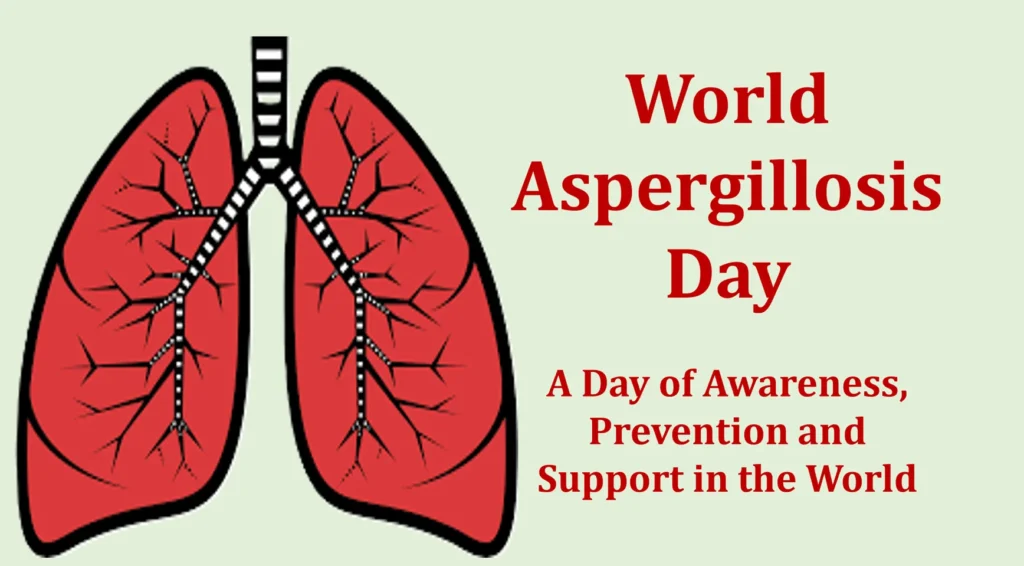
Introduction
World Aspergillosis Day is observed on February 1st with the aim of increasing awareness about aspergillosis, an infection that impacts a portion of the global population. Despite its health implications many people tend to overlook this issue. Therefore, this blog will explore the importance of World Aspergillosis Day in the context of aspergillosis. Discuss ways in which we can raise more awareness and support.
Understanding Aspergillosis
It is a fungal disease caused by types of fungi belonging to the genus known as Aspergillus. These fungi are commonly found in our environment in soil decaying plants and organic matter. Although most individuals come into contact with spores on a basis without experiencing any harm some individuals with weakened immune systems may contract aspergillosis. It can affect parts of the body such as lungs, sinuses and other organs (Warris 134).
Types of Aspergillosis
Let’s examine the various types of Aspergillosis:
- Allergic Bronchopulmonary Aspergillosis (ABPA): this condition is common in people with cystic fibrosis and asthma and is simply a reaction to Aspergillus in the airways. It mostly affects the lungs, resulting in respiratory discomfort, inflammation, and mucus production.
- Chronic Pulmonary Aspergillosis (CPA): People who currently have lung diseases like COPD or TB are often at risk for getting CPA, a lung infection. It may eventually cause fibrosis, nodules, and lung cavities.
- Invasive Pulmonary Aspergillosis (IPA): IPA is the name for a kind of it that mostly affects those whose immune systems are compromised, including those after chemotherapy or organ transplants. The fungus infiltrates lung tissues in instances of IPA. poses serious health dangers due to its ability to spread to organs if left untreated.
- Sinus Aspergillosis: The sinuses are impacted by this kind of aspergillosis. may show up as invasive sinusitis, fungal sinusitis, or the growth of a fungal ball (aspergilloma) inside the sinuses. It is frequently seen in those with weakened immune systems or pre-existing sinus problems.
- Cutaneous Aspergillosis: An infection of the skin, nails, or wounds brought on by the fungus Aspergillus is known as cutaneous aspergillosis. This syndrome is frequently observed in patients whose systems have been damaged by surgeries or trauma. It might show up as ulcers or small sores.
- Disseminated Aspergillosis: This uncommon and serious infection occurs when the fungus travels from the lungs to other organs such as the kidneys, heart, or brain. It is more prevalent in those who are extremely immunocompromised, and death from it is quite likely.
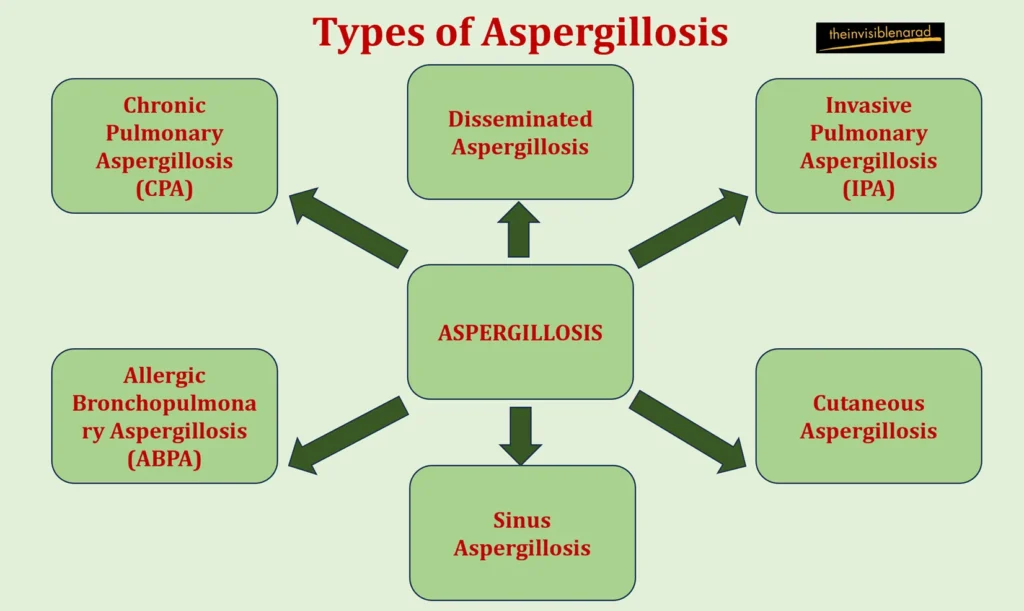
Treatment and diagnosis for each type of it vary based on the patient’s health condition and the extent of the fungal infection. Early detection and prompt treatment are crucial for better outcomes and to prevent complications in individuals affected by this disease.
Symptoms of Aspergillosis
Aspergillosis symptoms can vary depending on the type of infection and the organs affected. Here are some common symptoms associated with different forms of Aspergillosis:
- Allergic Bronchopulmonary Aspergillosis (ABPA):
- Persistent cough
- Wheezing
- Shortness of breath
- Fever
- Production of thick, brown mucus plugs
- General malaise or feeling unwell
- Chronic Pulmonary Aspergillosis (CPA):
- Persistent cough
- Coughing up blood (hemoptysis)
- Shortness of breath
- Fatigue
- Weight loss
- Chest pain
- Fever
- Night sweats
- Invasive Aspergillosis (IA):
- Fever
- Chest pain
- Shortness of breath
- Cough, possibly producing blood
- Fatigue
- Unexplained weight loss
- Headaches
- Sinus pain or congestion
- Skin lesions or rashes (in cases of cutaneous Aspergillosis)
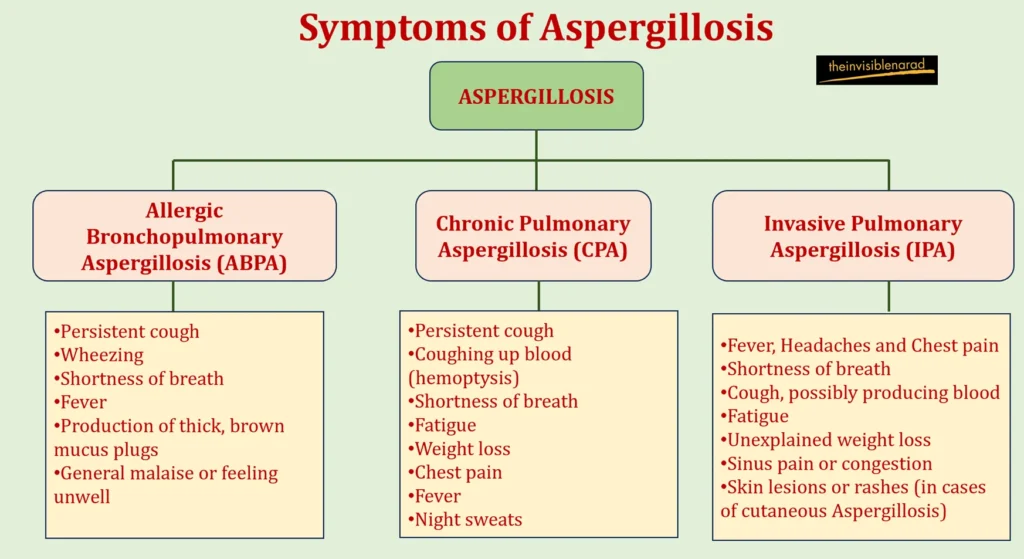
It’s important to note that some individuals, particularly those with weakened immune systems, may not exhibit typical symptoms, making diagnosis challenging. Additionally, symptoms of this disease can mimic those of other respiratory conditions or infections, further complicating the diagnostic process. Therefore, if someone experiences persistent respiratory symptoms or other concerning signs, they should seek medical evaluation promptly. Early detection and treatment are critical for better outcomes in Aspergillosis cases.
Global Prevalence and Impact
It is an issue that affects millions of individuals worldwide. Based on estimates, from the World Health Organization it is reported that over 4 million individuals worldwide are affected by asthma with sensitization, which is closely associated with ABPA. However, CPA primarily impacts individuals with lung conditions such, as tuberculosis and cystic fibrosis patients. People who are immunocompromised like HIV/AIDS patients, organ transplant recipients or those receiving chemotherapy face higher chances of invasive aspergillosis infections.
Understanding the Fungal Infection
Therefore, if one wants to understand how terrible it can be then they need to know its characteristics. Aspergillus molds produce very small aerial spores which can be inhaled into the body of anyone prone to it through respiration. When inhaled these spores cause diverse types of allergies and respiratory infections upon lodging themselves into the breathing organs. This ability makes Aspergillus more resilient than other fungi.
World Aspergillosis Day: A Call to Action
Background of World Aspergillosis Day
It is an annual worldwide event that is held on February 1 in order to raise awareness about this illness and promote global cooperation to fight this fungal infection. It is a day for healthcare providers, patients suffering with it and a lot more to convene, brainstorm together and request alternative methods of diagnosis, treatment or ways of access to care.
Raising Awareness and Advocacy Efforts
One cardinal objective of the Day is publicizing this illness among the masses. The organizers disseminate important facts about signs and symptoms of this disease, risk factors, prevention techniques and various prescribed treatments through educational campaigns and community events. They also make it possible by debunking myths surrounding the disease that are held in certain societies, but which hinder people from taking necessary steps towards promoting their respiratory health that help them empower themselves.
Equal importance is attributed to advocacy efforts due to their critical role in shaping health care policies that will ensure it is given adequate attention and resources. These advocates from patient organizations or medical practitioners liaise with policy makers, hospitals and research agencies so that it can be included within public health priorities in order to facilitate research funding for better diagnostic tools and treatment.
Promoting Early Detection and Proper Diagnosis
To effectively manage aspergillosis, early identification and correct diagnosis are necessary. Each year on World Aspergillosis Day initiatives is launched globally to improve diagnostics, including training of healthcare providers and dissemination of standardized diagnostic guidelines. Working together with medical societies, advocate organizations seek improved knowledge of the disease by doctors thus resulting in earlier intervention times for patients which lead to improved outcomes.
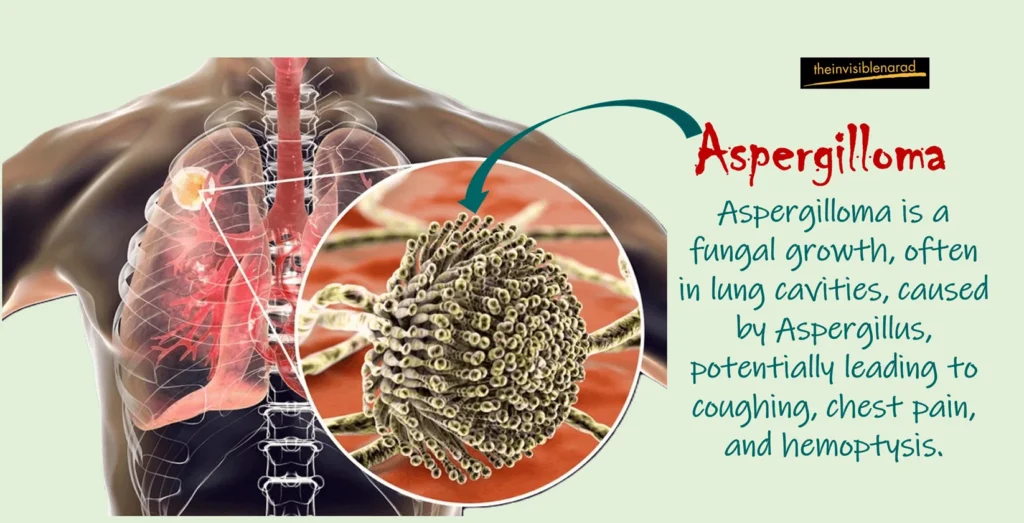
World Aspergillosis Day is also a great opportunity to improve diagnostic methods such as the use of biomarkers, new imaging methods and molecular diagnostics. When researchers, doctors and industry professionals come together, new ways of solving problems can be found. This will help to improve accuracy in diagnosis and create treatment plans that are more personalized.
“To bring about a future where aspergillosis has been defeated through awareness, prevention and unwavering support.“
Shedding Light on Aspergillosis Prevention and Treatment
The importance of preventing and treating it cannot be over emphasized because they contribute greatly to reducing the burden of this infection. Through practicing good hygiene and environmental control; considering immunization or vaccination; being protective towards vulnerable people, a lot can be done to lower the chances that one can get infected with it.
Preventive Measures and Best Practices
Importance of Hygiene and Environmental Control
Effective prevention starts with simple yet powerful practices. Reducing exposure to Aspergillus spores involves hygiene and environmental control. This fungus can be prevented from spreading if indoor areas are cleaned, disinfected, and maintained properly especially in hospitals and other healthcare facilities. Besides, proper ventilation systems and air filters will help reduce the accumulations of spores.
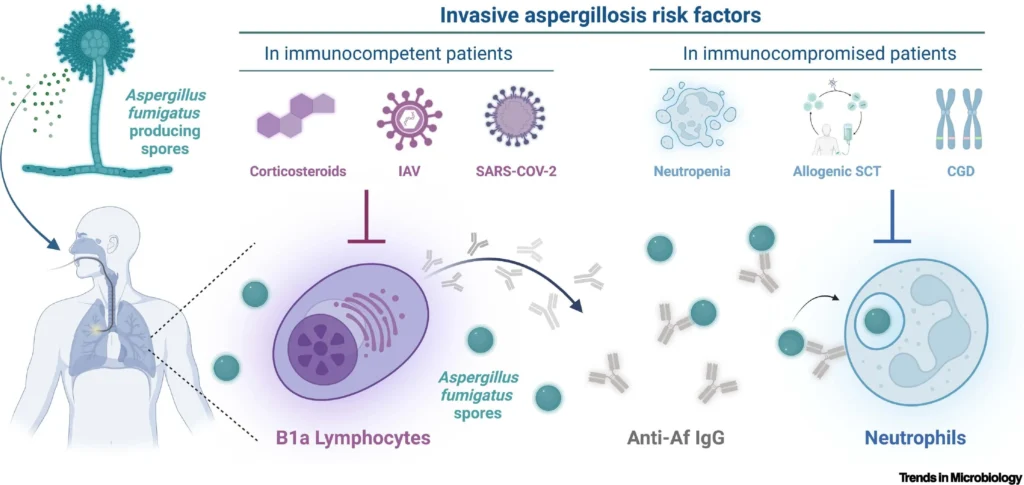
Consideration for Immunization and Vaccination
Prevention strategies for this disease must also incorporate immunization and vaccination. Although there is no specific vaccine made against Aspergillus species, research has shown that strong general immunity is essential in preventing invasive aspergillosis. It further highlights the need for routine vaccinations, particularly among those with underlying health problems or compromised immune system.
Safety Measures for the Vulnerable
Special attention should be given to protective measures for vulnerable populations. It affects asthmatics, CF patients, and people living with HIV/AIDS more than others do. Educating them on risk factors, symptoms, preventive behaviors can give them confidence to protect their own health. They can achieve this through easily implementable measures like putting on face masks when in areas of high risk or avoiding environments with molds around them which were causing the problem within just one day.
Innovations in Aspergillosis Treatment
Fungicidal therapy and its drawbacks.
Many improvements have been made on treatment of it over the years. Nevertheless, antifungal therapy has remained the mainstay of treatment with limitations. Antifungal resistance is also rare, but can be problematic, especially in patients whose immunity is suppressed for some reason. Consequently, new strategies to address antifungal resistance have emerged as a potential area of research.
Fresh Tactics for Dealing with Antifungal Resistance
New approaches to treating this disease are being investigated by scientists and drug-makers alike. Immunotherapy in particular has been shown to boost defense against Aspergillus and improve the outcome of patients who get this disease. Immunotherapeutic interventions thus aim at minimizing dependency on antifungal agents alone by using immunological methods to fight back.
Latest progress in immuno-therapy and other options for cure
Recombinant antibody-based therapies and targeted drug delivery systems among others such as immunotherapy seek to improve treatment efficacy while minimizing side effects associated with current medications used in their management. This gives hope that better outcomes will be observed in future days ahead.
Collaborative Efforts for Aspergillosis Research
International Research Initiatives
Advancing knowledge and finding new solutions for it require collaborative efforts on a global scale. International research initiatives that focus on the identification of risk factors, improved diagnostic methods, and evidence-based management strategies are pivotal to making significant progress in this field. Strengthening partnerships between researchers, clinicians, and public health agencies can ensure a comprehensive approach towards prevention, treatment, and research.
Pharmaceutic Manufacturers and Funding Organizations
This research is also supported by pharmaceutical manufacturers and funding organizations. New therapeutic interventions can be worked out and developed through these companies by providing financial resources for the research and improvement of them. These actors need to invest more in aspergillosis research considering its great impact on public health.
Importance of Multidisciplinary Collaboration in Advancing Knowledge
Furthermore, multidisciplinary collaboration is very important indeed. This means that if we gather together experts from different fields such as microbiology, immunology, pulmonology and infectious diseases, we can generate new ideas faster. In order to have a better understanding of it- preventive and curative methods can be improved through collective endeavors like science meetings or gatherings, research networks or knowledge-sharing platforms.
World Aspergillosis Day: Events and Impact Stories
As a worldwide forum for cooperation and advocacy, World Aspergillosis Day aims to support, raise awareness, and encourage prevention. This section will unpack the key events and initiatives of this important day, as well as personal stories of its survivors and successes in its care and advocacy.
Global Awareness Campaigns
Key Events & Initiatives
World Aspergillosis Day brings together different organizations, healthcare professionals, researchers, and patients who participate in several campaigns aimed at creating awareness about the condition among others causes symptoms treatment options etc. This could include social media campaigns or public lectures among others that are meant to facilitate knowledge sharing within communities.
Personal Stories of Aspergillosis Survivors
Personal stories of survivors with Aspergillosis are strong tools to enlighten people on what it means for individual sufferers and their families. Such stories make the campaign human by sharing experiences, challenges and triumphs with the victims themselves . Such survivors’ journeys inspire hope and resilience that altogether establish solidarity among the victims of Aspergillosis.
Positive Stories Regarding Aspergillosis Treatment and Awareness
Due to developments in its treatment and advocacy, many success stories have been witnessed across the globe. Research, innovative treatments, and an improved health care system have significantly affected positive outcomes for patients. Moreover, advocacy groups and health care providers’ efforts have increased access to quality care and support services. These achievement stories show that continual work together is essential in fighting against it.
Community Participation and Support
Groups of Patients Providing Social Support and Assistance
Supporting patient groups and organizations are important resources providing companionship as well as invaluable information for people suffering from aspergillosis and their families. Such associations offer a chance for patients to link up with others who experienced or still experience similar challenges so that they can exchange views or learn from one another. By using informative materials, web forums as well as local activities these organizations enable individuals to improve their way during Aspergillosis journey more effectively.
Educational Programs as well as Resources
Awareness-raising campaign and prevention efforts regarding Aspergillosis largely depend on education. The day is a time for World Aspergillosis Day to highlight education programs that will enable people recognize symptoms associated with as well as risk factors of Aspergillosis, and take necessary steps for prevention. Through these programs, both the lay public and healthcare professionals are educated about this condition.
Empowering Patients and Their Caregivers
For this reason, it is important to encourage patients and their caregivers so that they can actively participate in the treatment of Aspergillosis. More importantly, it is vital for patients and their relatives to acquire sufficient knowledge concerning treatment alternatives, self-support initiatives or sources of advice. We believe that through engaging patients and caregivers in their health- care journey we can contribute to their overall wellness by improving the results of treatments.
Moving Forward: Future Goals and Directions
Strengthening Research and Development
Aspergillosis understanding, prevention and treatment are based on continuous research and development. The World Aspergillosis Day is aimed at promoting this initiative through research that is interactive, innovative and hastens the pace. By investing in studies of this nature, we will have facilitated the creation of new treatments for it as well as diagnostic tools, preventive measures against its occurrence.
Fostering International Collaboration
This is a global health problem which transcends boundaries. International cooperation is necessary to address this problem of public health in all countries. In addition, the World Aspergillosis Day helps shape collaboration between states; healthcare sectors and academic departments affiliated with these institutions worldwide. Consequently, when we come together with one purpose by integrating knowledge base, proficiencies and assets within us shall improve already good early detection approaches, better care pathways for individuals inflicted with Aspergillosis while enhancing prevention measures collectively.
Improving Access to Care and Treatment
Those who have Aspergillosis need, above all, access to quality care and treatment. World Aspergillosis Day stands for policies and initiatives that are aimed at enhancing the availability of healthcare services, diagnostic tools, anti-fungal medications, as well as supportive care resources. There is need for us to address barriers such as affordability, lack of access and knowledge to ensure that people with Aspergillosis get the right type of attention in time.
Conclusion & FAQs
World Aspergillosis Day is a day to help people become more aware of this condition, support and encourage collaboration as it relates to the challenges associated with Aspergillosis. Main activities, personal experiences and success stories published on this day highlight the importance of united efforts in fighting against this fungus infection in any place. It is a reminder that we can achieve great things by uniting against Aspergillosis-affected individuals.
Finally let’s commit ourselves to support World Aspergillosis Day. By making noise about it; creating awareness around it; and assisting those affected by Aspergillus, we may be able contribute toward a future where early detection, adequate treatment and humane concern will be universally available. Let’s do it together now!
Frequently Asked Questions (FAQs)
What are some of the common symptoms of Aspergillosis?
There are several common symptoms that are associated with aspergillosis such as coughing, wheezing, chest pain, shortness of breath, fever, and fatigue.
What are some risks linked to getting Aspergillosis?
Some risk factors that might cause aspergillosis include a weakened immune system; chronic lung conditions like COPD or asthma; prolonged use of corticosteroids for nose drops or sprays and exposure to mold or dust.
How can I know if I have Aspergillosis?
Can it be prevented?
To prevent aspergillosis, one should try to avoid exposure to molds and fungus in general and take preventive measures for instance keep good hygiene practices by avoiding smoking, using air filters for high-risk occupations while managing any underlying health problems among others.
What about its long-term effects?
Yes, indeed there are many long-term complications arising from these diseases which includes things like: Chronic lung damage Sinus problems Respiratory failure Invasive fungal disease.
How can individuals support World Aspergillosis Day?
They might back up World Aspergillosis Day by means of participating in awareness campaigns on this issue; disseminating information via various social media tools donating some funds to relevant NGOs (non-governmental organizations) in order to tackle this problem; lobbying for wider access to care and resources.
